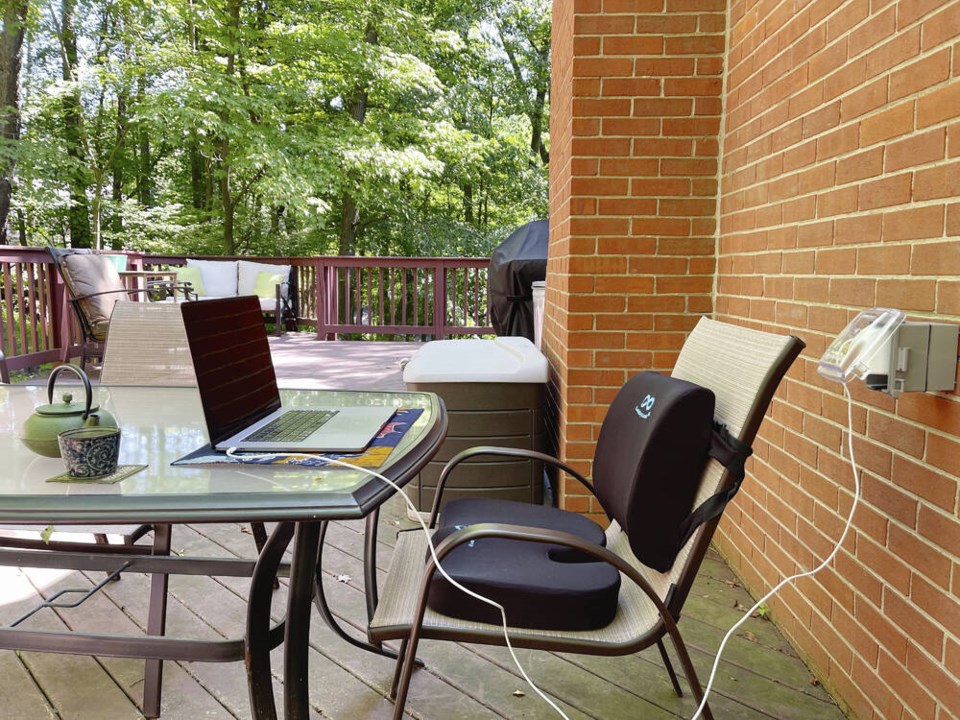Thousands of sa╣·╝╩┤½├¢ employees who spent the past two years working remotely have been preparing to return to the office. Some have already returned.
In mid-February, the provincial health officer amended the sa╣·╝╩┤½├¢ safety order requiring employers to allow employees to work from home to the extent that is feasible.
When the COVID shutdowns happened two years ago, downtown Victoria became an eerie wasteland. Life was limited to pigeons, crows, rats and the occasional wary ’burbanite hurrying to pick up goods from businesses offering curbside service.
It was as if the zombie apocalypse had come.
The atmosphere slowly became more enlivened as people started travelling that summer and the first return-to-work orders were prepared.
Then Delta hit.
Things relaxed again last summer, with new return-to-work schedules put in place, and travel picking up again. A couple of Destination Greater Victoria’s numbers for July and August last year rivalled those of the same months pre-pandemic.
Then we had Omicron.
This return to in-office work has been gradual. Recent estimates put the number of downtown in-office workers at about 28 per cent.
At least 65 per cent of pre-pandemic office employees are needed to keep coffee shops, restaurants and retail shops open.
Even with a 358-ship cruise-ship season beginning this week and predicted to bring 900,000 visitors to Victoria, without tens of thousands of daytime office workers shopping or ordering coffee or meals during their workday breaks, downtown can’t boom.
The amended public health orders allow that surge. As of Friday, the sa╣·╝╩┤½├¢ Vaccine Card will no longer be required to access restaurants, sports games and movie theatres.
Businesses will transition from COVID-19 safety plans to general communicable disease plans. Some may still require mask-wearing and the vaccine card.
For example, some local municipalities are lifting their vaccination mandates, and others are waiting to see what Omicron-B does.
Downtown businesses are hoping the return to office work will mean a return to pre-pandemic levels of people moving through and shopping downtown. They’re counting on the behaviour and spending patterns of those returning to their offices picking up right where they left off in early 2020.
Will that happen?
We already know the pandemic has dramatically changed work culture. The pandemic demonstrated that, for many kinds of work and many workers, remote work is feasible, productive and efficient.
We also know that some people won’t want to return to the office at all. Some don’t want full-time hours in the office. And some don’t want regular office hours.
A recent Angus Reid Institute survey shows that 56 per cent of Canadians currently working from home say they’d look for a new job if asked to return to the office, with almost one-quarter of these reluctant office workers saying they’d quit on the spot.
Non-work considerations are the main reason these remote workers report being reluctant to return to the office full time. Canadians who work from home are more likely than those who don’t to say their work-life balance, their relationship with their spouse and their life overall improved over the course of the pandemic.
We’ve also heard how many employers are having a hard time hiring staff. The demand for skilled and experienced workers empowers employees who want to negotiate new work arrangements.
They and their employers are having to navigate what “normal” work will look like. It might mean hot-desking in the office a few days each week or every two weeks. It might mean working remotely except for scheduled important meetings or group-project work. It might mean something else.
It’s also possible that many employees who do return to full-time office work now have different spending habits.
Credit-card debt has gone down for many Canadians over the past two years, but mortgage debt is at its highest levels ever. Inflation rates not seen since the ’80s and rising interest rates are further constraining individual and family pocketbooks.
The last two years shifted many people’s perspectives and priorities. Brown-bag lunches may be the order of the day. Fewer outfits and pairs of dress shoes are needed for reduced in-office hours.
All of which is to say that, even with the return to “normal” office work downtown, “normal” may not be what we’re used to.



